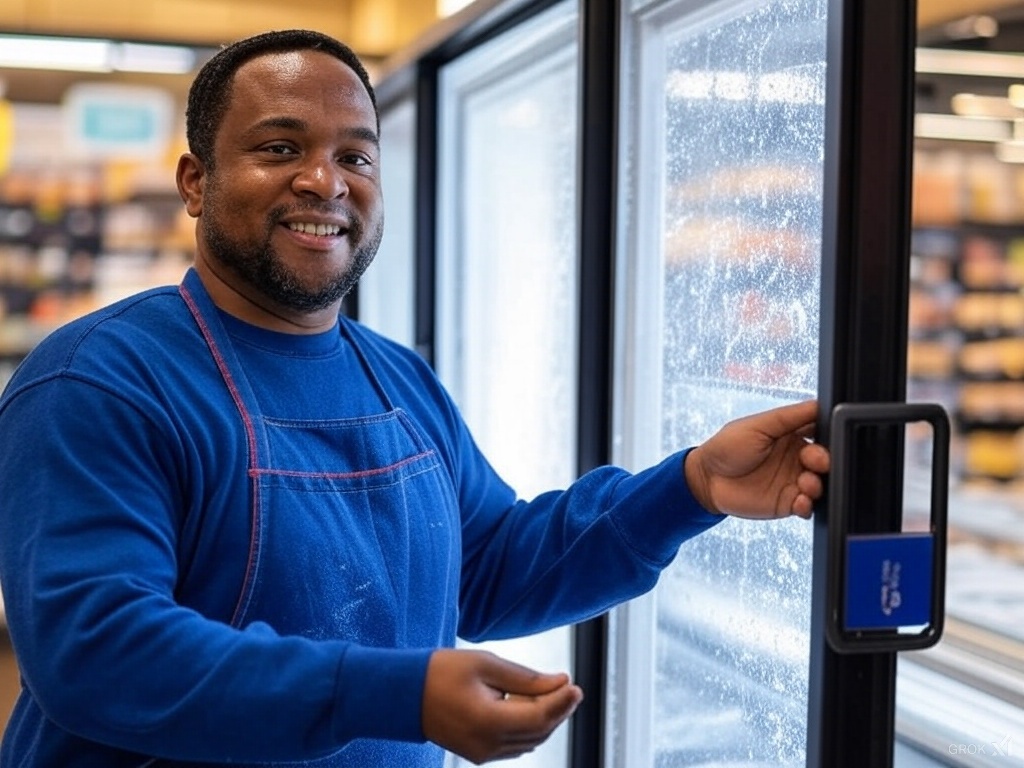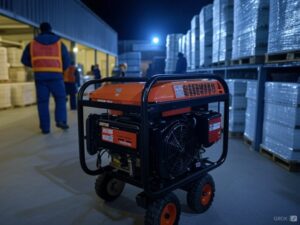The cold storage industry is a cornerstone of global supply chains, ensuring the safe preservation and distribution of perishable goods. However, the escalating effects of climate change—rising temperatures, unpredictable weather patterns, and increased frequency of extreme events—are posing unprecedented challenges to cold storage operations. Understanding these impacts is essential for developing resilient strategies that safeguard operational efficiency and sustainability.
The Rising Heat and Its Consequences
Global temperatures are on the rise, and so is the demand for refrigeration. As ambient temperatures increase, refrigeration systems in cold storage facilities must work harder to maintain desired internal conditions. This leads to:
- Higher Energy Consumption: Increased cooling requirements translate to higher electricity usage, elevating operational costs and straining local power grids.
- Equipment Wear and Tear: Extended operating times put additional stress on compressors, fans, and other refrigeration components, reducing their lifespan and increasing maintenance needs.
- Capacity Challenges: In warmer regions, facilities may struggle to meet cooling demands, particularly during peak seasons or heatwaves.
The Impact of Unpredictable Weather
Climate change has brought about more frequent and severe weather events, including hurricanes, floods, and heatwaves, all of which can disrupt cold storage operations.
- Power Outages: Extreme weather often leads to blackouts, jeopardizing the integrity of stored goods and increasing reliance on backup power systems. For instance, the U.S. experienced about two times more weather-related outages during the last 10 years (2014-2023) than during the first 10 years analyzed (2000-2009). Severe weather, such as high winds, rain, and thunderstorms, caused 58% of weather-related outages.
- Flooding Risks: Facilities located in flood-prone areas are at risk of water damage to infrastructure, equipment, and stored inventory. For example, flooding accounted for 70% of weather-related supply chain disruptions in 2024, with the U.S. leading the world in flood events last year, recording 123 incidents.
- Transportation Disruptions: Delayed deliveries caused by weather events can lead to spoilage and increased operational costs, highlighting the importance of maintaining robust cold chains. In the U.S., winter weather creates slippery roads, reducing traction and increasing the risk of accidents. Nearly 21% of vehicle crashes are weather-related, with rain contributing to 70% of these incidents.
Indirect Impacts on Cold Storage Operations
- Shifts in Agricultural Production
Climate change is altering growing seasons and crop yields, impacting the availability and distribution of perishable goods. For instance, the U.S. Southwest has been experiencing one of the most severe long-term droughts of the past 1,200 years since early 2020, affecting crop yields significantly. Additionally, areas in the northern U.S. and southern Canada are likely to become more important sources of grain production, while yields decline in the south and middle of the country due to higher summer temperatures. Cold storage operators must adapt to shifting supply chain dynamics, including changes in the types and volumes of products requiring refrigeration.
- Increased Regulatory Pressure
Governments worldwide are introducing stricter regulations to curb emissions and promote sustainability. Cold storage facilities may face increased scrutiny over energy efficiency and refrigerant choices, necessitating compliance with new standards. For example, the Food Safety Modernization Act (FSMA) in the United States requires cold storage facilities to implement Hazard Analysis and Critical Control Points (HACCP) plans, maintain proper documentation, and undergo regular inspections and audits. Similarly, the European Union’s General Food Law mandates compliance with specific temperature and humidity requirements for different types of products.
- Carbon Emissions Accountability
As the cold storage industry contributes to greenhouse gas emissions through energy use and refrigerant leaks, operators are under growing pressure to adopt greener technologies and reduce their environmental footprint. In the United States, Cold Storage has achieved an 11.4% reduction in CO2 emissions per cubic foot from 2019 to 2021 by implementing sustainable practices. Additionally, the global food cold chain is responsible for 1% of greenhouse gas emissions, and these emissions are projected to rise significantly without active intervention.
Strategies for Resilience
- Energy Efficiency Upgrades
Investing in energy-efficient equipment, such as high-efficiency evaporator fan motors and advanced insulation, can mitigate the impact of rising energy demands. For example, the United States Cold Storage industry has achieved significant energy savings by upgrading to high-efficiency evaporator fan motors and implementing advanced insulation techniques. Additionally, many facilities are integrating renewable energy sources like solar or wind to further reduce costs and emissions.
- Backup Systems and Contingency Plans
Robust backup power systems, such as on-site generators and battery storage, are critical for maintaining operations during power outages. For instance, Americold Logistics has implemented comprehensive backup power systems and contingency plans to ensure minimal disruption during extreme weather events. They have also developed detailed contingency plans to address potential equipment failures and natural disasters.
- Advanced Monitoring and Automation
IoT-enabled sensors and smart systems allow real-time monitoring of temperature, humidity, and equipment performance, enabling operators to respond quickly to fluctuations and prevent losses. There are several systems are designed to operate across a wide range of temperatures, facilitating seamless transfer of goods between different zones without exposing them to temperature variations5. Additionally, many modern cold storage facilities are leveraging advanced sensors and IoT technologies for real-time monitoring and adjustments.
- Location Assessment and Flood Mitigation
When building new facilities, operators should consider climate risks, opting for locations less prone to extreme weather. Existing facilities in vulnerable areas can invest in flood barriers, elevated storage systems, and water-resistant materials. The Federal Emergency Management Agency (FEMA) encourages communities to incorporate flood diversion and storage projects to mitigate the impacts of climate change. Existing facilities in vulnerable areas can invest in flood barriers, elevated storage systems, and water-resistant materials to enhance resilience.
Future Considerations
- Adoption of Low-GWP Refrigerants: Transitioning to refrigerants with a lower global warming potential (GWP) can reduce the environmental impact of refrigeration systems. For example, the Kigali Amendment to the Montreal Protocol aims to phase down the use of high-GWP hydrofluorocarbons (HFCs) globally, encouraging the adoption of alternatives like ammonia, carbon dioxide, and hydrofluoroolefins (HFOs). Companies like Carrier and Danfoss are already developing and implementing low-GWP refrigerant solutions to meet these new regulations.
- Collaborative Efforts: Partnerships with renewable energy providers and participation in carbon offset programs can help the industry align with global sustainability goals. For instance, the Cold Chain Federation in the UK has launched initiatives to promote the use of renewable energy in cold storage facilities. Additionally, companies like Lineage Logistics are investing in solar power and other renewable energy sources to reduce their carbon footprint.
- Climate Adaptation Training: Educating staff on climate risks and best practices ensures preparedness and resilience in the face of evolving challenges. Organizations like the Global Cold Chain Alliance (GCCA) offer training programs and resources to help cold storage operators understand and mitigate climate-related risks. These programs cover topics such as energy efficiency, emergency preparedness, and sustainable practices.
The impacts of climate change on cold storage operations are undeniable and multifaceted, affecting everything from energy consumption to supply chain stability. However, these challenges also present opportunities for innovation and improvement. By investing in advanced technologies, adopting sustainable practices, and preparing for climate risks, the cold storage industry can not only weather the storm but thrive in a changing world. Adapting today ensures a stronger, more sustainable tomorrow for this vital sector.







